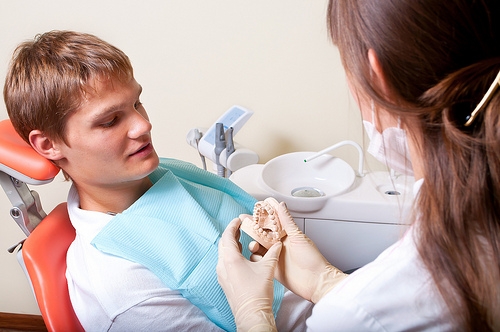
If you’ve been hiding your smile because you have crooked teeth or gaps between your teeth, it’s time to consider orthodontic treatment with Dr. Brent Nickolaychuk. Preparing for treatment is an important part of getting the smile you want.
Basic exams
The first step of preparation is the examination. An oral exam and X-rays taken at our office are necessary to identify potential problems and ensure the right steps are taken to prepare for orthodontic treatment at Kildonan Orthodontics.
Dr. Brent Nickolaychuk will first examine your teeth and take X-rays to determine if it is necessary to extract any teeth or additional work is necessary before braces are possible. You will be prepared for the next step of treatment after your exam is complete and potential problems are identified.
Model for bite
The next step in preparing for orthodontic is taking a plaster model of the mouth. With the model, Dr. Brent Nickolaychuk will be able to determine how the jaw is aligned so that appropriate adjustments can be made to the mouth and jaw with braces.
Depending on the situation, the model may be used to help evaluate your jaw and make decisions about appropriate treatment for your specific needs. Dr. Brent Nickolaychuk can create a model of your mouth with the bite indentation that is taken during preparation.
Extracting teeth
If it is determined that a tooth extraction is necessary, then the final step of preparing for orthodontic treatment is the removal of teeth. Only Dr. Brent Nickolaychuk can determine if it is necessary to remove any teeth before moving forward with the procedure to put on braces.
When your teeth are crooked, have a gap, or otherwise make you unhappy, orthodontic treatment at Kildonan Orthodontics may be an appropriate solution. Although it may take time to prepare for the actual procedure, making the decision to seek treatment can provide the opportunity to show the world a beautiful smile.
For more information about orthodontic treatment and its benefits, or to schedule a consultation with Dr. Brent Nickolaychuk, please give us a call at our convenient Winnipeg, Selkirk, or Southdale, MB office!




